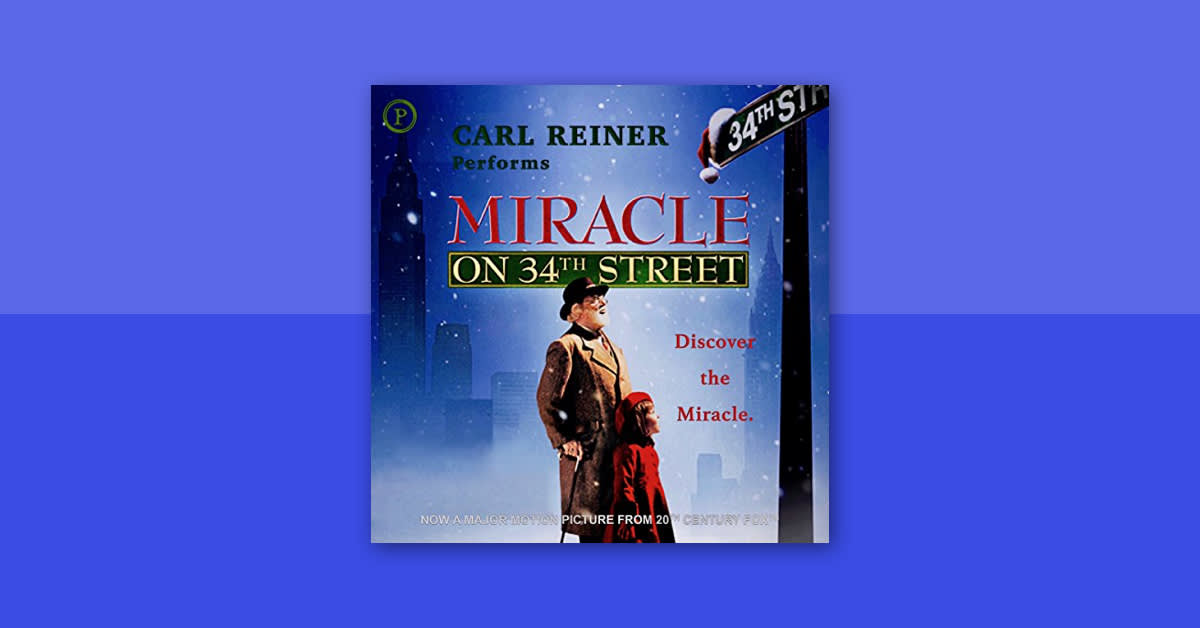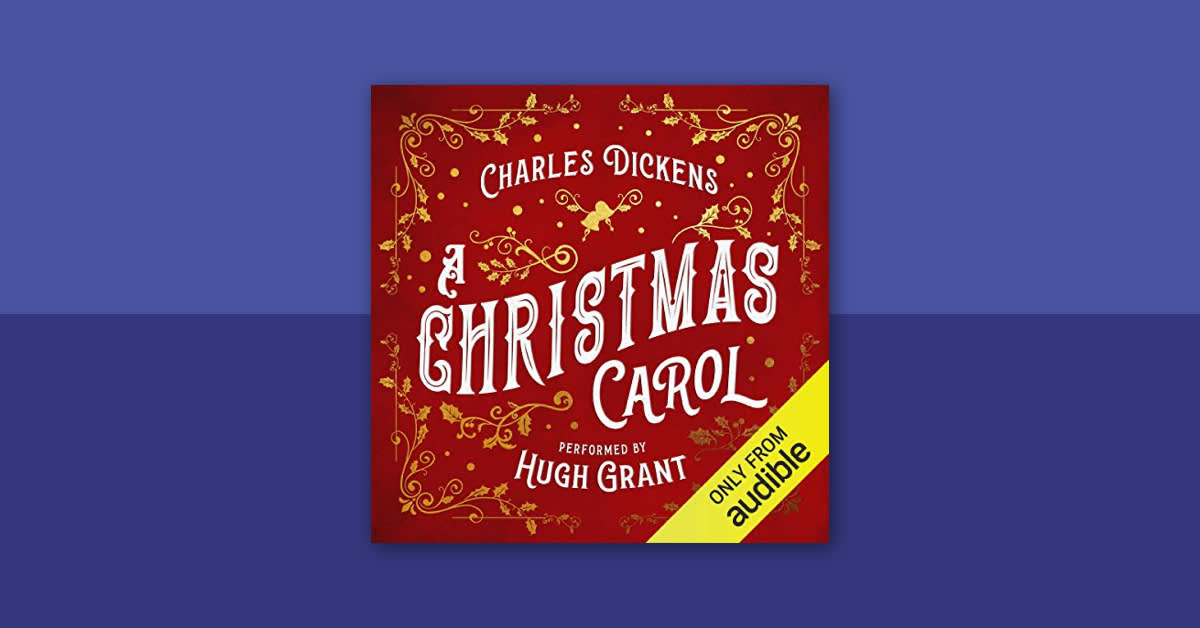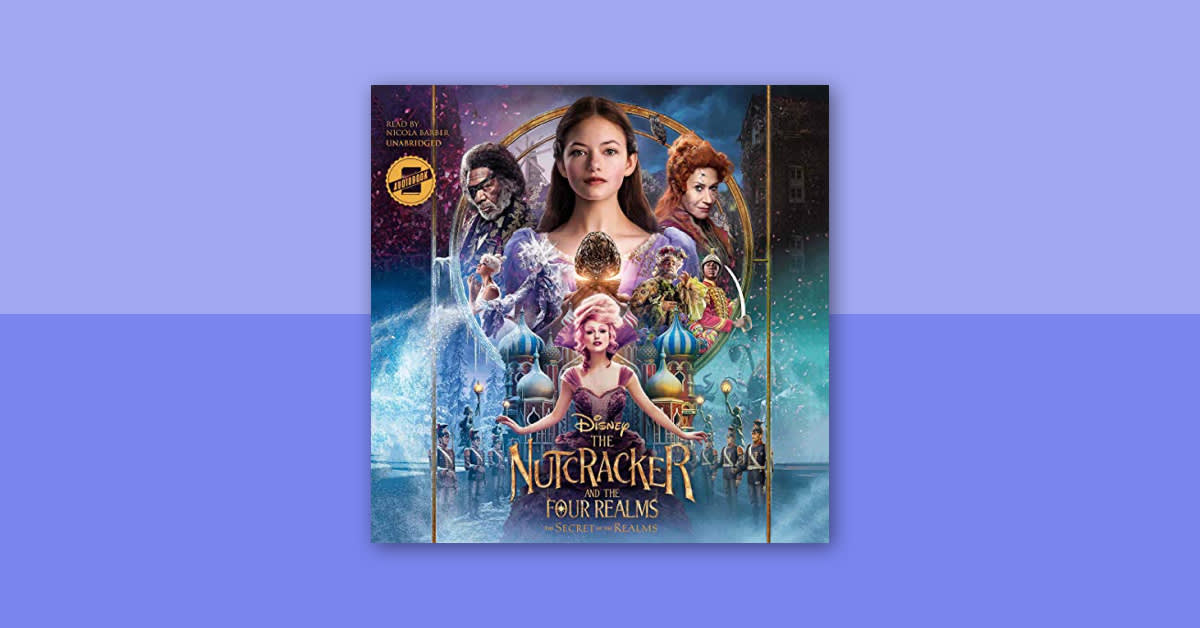As we get closer and closer to Christmas, there's no better time than now to revisit those time-tested holiday favorites, including songs, books, animated TV specials, plays, and movies. One heartwarming must-watch of the season is Miracle on 34th Street. This classic captures the spirit of Christmas perfectly; after all, as Kris Kringle says in the beloved film, "Christmas isn't just a day, it's a frame of mind.” You're likely familiar with the story, and you've probably seen at least one of the movies. But did you know Miracle on 34th Street is also a best-selling novella by Valentine Davies?
Is Miracle on 34th Street based on a book?
Yes! Valentine Davies was inspired to write Miracle on 34th Street when he was standing in line at a big department store during the Christmas season. Originally, Davies wrote the story as a screenplay entitled The Big Heart. In October 1946, 20th Century Fox started production on the screenplay—with George Seaton stepping in to direct and rewrite the screenplay. And in June 1947 when it was released, the film was finally given the title Miracle on 34th Street. Valentine Davies also wrote a 120-page novelization of the script which was released in 1947 by Harcourt Brace & Company in conjunction with the film's release.
Miracle on 34th Street takes place between Thanksgiving and Christmas and follows the story of a department store Santa Claus who claims to be the real deal, straight from the North Pole. Doris, who works for Macy's, hires Kris Kringle for the Thanksgiving Day Parade after their original Santa is discovered to be inebriated. The new Santa does such a great job that Doris hires Kris Kringle to be their Santa in the department store. Kringle is a quick favorite among the kids who come to see him, but Doris is concerned about the fact that he seems to believe he is the real Santa. Even more concerning is the fact that Doris's daughter, Susan, is being swayed by Kris Kringle too. The story culminates with a trial to determine whether or not Kris Kringle is the real Santa. The 1947 film stars Maureen O'Hara as Doris Walker, John Payne as Fred Gailey, Edmund Gwenn as Kris Kringle, and Natalie Wood as Susan Walker.
The 1947 film went on to win three Academy Awards: Edmund Gwenn for Best Actor in a Supporting Role, Valentine Davies for Best Writing, Original Story, and George Seaton for Best Writing, Screenplay. And while the film is nearly 75 years old, it remains one of the most-watched and most-beloved movies of the holiday season.
How many adaptations of Miracle on 34th Street are there?
Of course, just because Miracle on 34th Street is a timeless classic doesn't mean there haven't been attempts to remake the film and retell Davies's story. There have been three adaptations for television and one short-lived Broadway musical entitled Here's Love. The Broadway production, written by Meredith Wilson, directed by Stuart Ostrow, and choreographed by Michael Kidd, opened on October 3, 1963, and closed less than a year later.
The most famous reimagining of the Miracle on 34th Street story is the 1994 adaptation, written and produced by John Hughes and directed by Les Mayfield. The film stars Richard Attenborough as Kris Kringle, Elizabeth Perkins as Doris Walker, Mara Wilson as Susan Walker, and Dylan McDermott as Bryan Bedford. The 1994 version premiered on November 15, 1994, at Radio City Music Hall. While this "Miracle" received mixed reviews, many fans and critics consider the film a worthy successor to the original film and book. The 1994 film is the only theatrical remake of Miracle on 34th Street.
What are the major differences between Miracle on 34th Street and the book on which it was based?
The 1947 film was produced at the same time Davies adapted the story as a novella. Because both versions were created at nearly the same time, both the film and the novelization are fairly similar, with minor changes to some scenes and some lines of dialogue. If you are a fan of the 1947 movie, the book offers up the characters and story that you know and love, with a few additional details to keep the story fresh and expand on characters.
The 1994 adaptation, however, is more significantly different from Davies's novella. To start, the department store in the original is Macy's and at the very beginning of the story Kris Kringle plays Santa Claus in the Macy's Thanksgiving Day Parade. However, Macy's did not give the 1994 film permission to use its name in their story. And so if you're looking for Macy's in the 1994 film, you won't find it. Instead, the department store in the 1994 film is called Coles, although it looks and acts just like a Macy's department store, right down to the famous Thanksgiving Day Parade.
In the original story, when Susan is trying to decide whether this Santa Claus is the real thing or not, she decides to ask him for something she would never tell her mother about. If she wakes up on Christmas morning and has it, then she will believe in Santa Claus. In the original film and the novella, this idea is Susan's own. In the 1994 film, Susan's mother, Doris, gives her the idea to test Santa Claus in this way.
On that note, Doris in the 1994 version of the film seems much more open to her daughter having different beliefs than her. In Davies's original story, Doris insists that Susan should not believe in Santa, and that believing in magic and fairy tales is ridiculous. While Doris in the 1994 version still thinks that belief in Santa is a waste of time, she's also open to her daughter exploring her own beliefs and making her own decisions, which is why she suggests the idea of testing Santa in the first place.
The resolution of the court scene is one of the biggest changes between the book and the original and the 1994 adaptation. In both the book and the original Miracle on 34th Street movie, Kris Kringle wins his court case after the postal service delivers bags of letters addressed to Santa Claus to him in the middle of the trial. Because the post office recognizes him as Santa Claus, the judge concedes that the law must recognize him as Santa Claus too. In the 1994 remake, the judge dismisses the case because if we can believe that God exists, then we should also be able to believe that Santa Claus is real.
In each version of Miracle on 34th Street, many aspects remain the same. Most importantly, the themes and messages of the story stays true to Davies's original vision in each of the adaptations. Essentially, Miracle on 34th Street reinforces that, while realism and practicality have their place, a world without wonder, fantasy, and magic is a world without heart. And ultimately, we can all benefit from having a little faith and believing in miracles... especially when it comes to Christmas.




